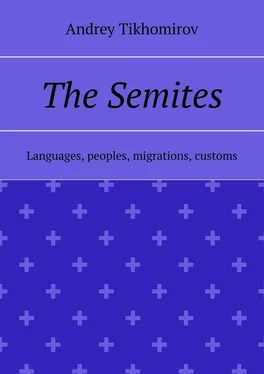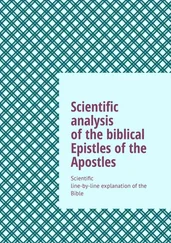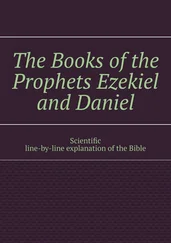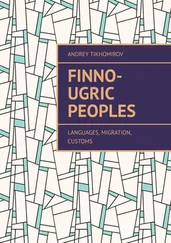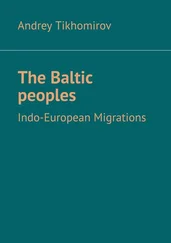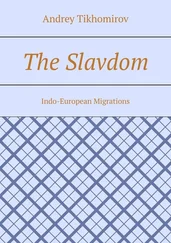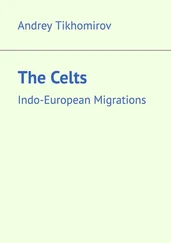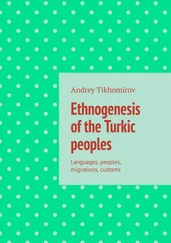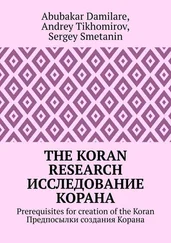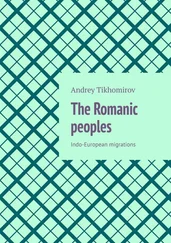Andrey Tikhomirov - The Semites. Languages, peoples, migrations, customs
Здесь есть возможность читать онлайн «Andrey Tikhomirov - The Semites. Languages, peoples, migrations, customs» — ознакомительный отрывок электронной книги совершенно бесплатно, а после прочтения отрывка купить полную версию. В некоторых случаях можно слушать аудио, скачать через торрент в формате fb2 и присутствует краткое содержание. ISBN: , Жанр: Прочая документальная литература, на английском языке. Описание произведения, (предисловие) а так же отзывы посетителей доступны на портале библиотеки ЛибКат.
- Название:The Semites. Languages, peoples, migrations, customs
- Автор:
- Жанр:
- Год:неизвестен
- ISBN:9785449823151
- Рейтинг книги:5 / 5. Голосов: 1
-
Избранное:Добавить в избранное
- Отзывы:
-
Ваша оценка:
- 100
- 1
- 2
- 3
- 4
- 5
The Semites. Languages, peoples, migrations, customs: краткое содержание, описание и аннотация
Предлагаем к чтению аннотацию, описание, краткое содержание или предисловие (зависит от того, что написал сам автор книги «The Semites. Languages, peoples, migrations, customs»). Если вы не нашли необходимую информацию о книге — напишите в комментариях, мы постараемся отыскать её.
The Semites. Languages, peoples, migrations, customs — читать онлайн ознакомительный отрывок
Ниже представлен текст книги, разбитый по страницам. Система сохранения места последней прочитанной страницы, позволяет с удобством читать онлайн бесплатно книгу «The Semites. Languages, peoples, migrations, customs», без необходимости каждый раз заново искать на чём Вы остановились. Поставьте закладку, и сможете в любой момент перейти на страницу, на которой закончили чтение.
Интервал:
Закладка:
The Semites
Languages, peoples, migrations, customs
Andrey Tikhomirov
© Andrey Tikhomirov, 2020
ISBN 978-5-4498-2315-1
Created with Ridero smart publishing system
Semitic languages and peoples
Semitic languages – one of the branches of the Semitic-Hamitic family of languages, which is also called the Afro-Asian or Afro-Asian macro-family of languages common in North Africa, Southwest Asia and the island of Malta. They are divided into 5 (or 6) main branches: Semitic, Egyptian, Berber-Libyan, Chadian, Cushite and Omot (sometimes considered as a Cushite branch). The Afrasian family, in turn, is part of an even larger language family – the Nostratic. Nostratic languages (from Lat. Noster – ours), a macro-family of languages, including a number of language families and languages of Eurasia and Africa (Indo-European, Kartvelian, Afrasian, Uralic, Altai, Dravidian languages, etc.).
Semitic languages consist of groups: 1) north-peripheral, or eastern (extinct Akkadian with dialects of Assyrian and Babylonian); 2) north-central, or north-western [living – Hebrew and New Aramaic dialects, united under the name of the Assyrian (New Syriac) language; the dead – Eblaite, Amorite, Canaanite, Ugaritic, Phoenician-Punic, Aramaic dialects; Ancient Aramaic, Imperial Aramaic, Western Aramaic – Palmyra, Nabatean, Palestinian; East Aramaic – Syriac, or Syriac, Babylonian-Talmudic, Mandean]; 3) south-central [Arabic (with dialects) and Maltese]; 4) south-peripheral (living – Mehri, Shkhauri, Socotri, etc.; dead – Minean, Sabei, Kataban); 5) Ethiosemitic (living – tiger, tigray, or tigrinya, Amharic, argobba, etc.; dead – geez (ge’ez), or Ethiopian, hafat). Modern Semitic languages are divided into: South Semitic, including Arabic (literary, colloquial, disintegrating into a number of dialects, and Maltese), Amharic, gurage, Harar, tiger, tigrinya (the last five are in Ethiopia and Eritrea), Ehkili and Mehri in South Arabia and Socotri on the island of Socotra; North-Western languages, including the New Syriac and other living dialects of the Aramaic language, Moabite and Hebrew, or Hebrew, now the official language in Israel (Canaanite group), as well as languages and dialects of the Aramaic group.
Hamitic languages – a name proposed by the German Egyptologist and linguist R. Lepsius to denote some African languages based on the presence of a grammatical gender of nouns. This group unites: Berber, Cushite, Ancient Egyptian and Coptic languages. At the beginning of the XX century. The German linguist K. Meinhof, developing the provisions of Lepsius, also argued that all African languages with a genus constitute a single hamitic family of languages. In his opinion, light-skinned peoples spoke these languages, who came to Africa from the north and brought the beginnings of a higher culture. From the mixing of Hamitic languages with the languages of the indigenous population of Africa – Negroids, Bantu languages have evolved. Among the Hamitic languages, Meinhof included, in addition to the Berber and Cushite languages, also the languages of Hausa, Masai, Ful and Hottentot languages. However, further studies have shown that the Ful language is among the Sudanese languages of the Atlantic group. The Hottentot languages together with the Bushman languages make up a special family of languages. The Masai language belongs to the Nilotic language family. The Berber and Cushite languages are part of the Semitic-Hamitic languages, this family is not a combination of two groups – Semitic and Hamitic, because, as the French linguist M. Cohen pointed out, there is not a single feature common to all Hamitic languages that would contrast them with Semitic. All the languages of North Africa (Berber and Cushite) constitute separate groups within the Semitic-Hamitic family of languages, which also includes Ancient Egyptian and Coptic, as well as the Hausa language with its related languages. The name “Hamitic languages” is now supplanted by the term “Semitic-Hamitic.”
Kushite languages, a branch of the Afrasian languages. It consists of 5 groups: 1) northern – Bedauie; 2) central – agave languages; 3) Oriental – Afarsaho languages, Somali (Somali, Boni, Bayso, Randille), Oromo, Burji-Sidamo, Conso, Gidole, Arbore, Geleb, Mogodogo, etc.; 4) Western – Ometo, Kaffa languages, etc.; 5) southern – Iraqi, Aramanic languages. Kushite languages are groups of languages that make up the Semitic-Hamitic family of languages. The tribes who speak the languages of the southern group are surrounded on all sides by a Bantu-speaking population. The comparative grammar of the Cushite languages proves their closeness to each other and their undoubted kinship is not in doubt. The grammatical system and the main vocabulary of the Cushite languages have much in common. All nominal verb stems in them for the most part consist of three consonants. Various forms of the verb are formed by changing vowels. Personal pronouns are similar in all Cushite languages. There are two types of conjugation in Cushitic languages: mutable verbs are conjugated using prefixes, immutable verbs are conjugated using suffixes. Each of them with the help of inflection can form different times.
The extinct Ethiopian language (or ge’ez, geez) was close to the ancient South Arab and modern Arabic languages, in some morphological and lexical features it was close to Akkadian. The Ethiopian language arose at the beginning of our era on the territory of Ethiopia among immigrants from South Arabia and became the state language of the state of Axum. Starting from the 9th century the Ethiopian language was supplanted by its related Amharic language. From the 13th century Ethiopian language ceased to be the official language, but as a literary language continued to exist until the end of the XIX – beginning of XX centuries. Now it is the cult language of the Christian population of Ethiopia. Being in interaction with the Amharic language, the Ethiopian language enriched the latter lexically and lost some features of its original phonetic system. Ethiopian writing is the syllabic alphabet of the Ethiopian language. It consists of 26 main characters, each of which has seven options, or the so-called “orders”. Letters are written from left to right. The pronunciation of Ethiopian letters is known from the Amharic tradition. With the additional letters of this letter, it is used for Amharic, Tiger, Tigrinya and other languages of Ethiopia and neighboring countries. Ethiopian writing comes from South Arabic writing.
The oldest monuments of Semitic languages include the Akkadian cuneiform inscriptions of the Mesopotamia of the Tigris and Euphrates, the proper names and localities of Palestine in Egyptian inscriptions (3—2 thousand BC). There are written records in Akkadian, Hebrew, Syriac, Ethiopian, Arabic. The inscriptions in Ugaritic, Phoenician-Punic, Minean, Sabaean, etc. are preserved.
Extensive writing is available in Akkadian, Hebrew, Syriac and other Aramaic dialects, Ethiopian and especially Arabic, which was a long time literary language also in Iran, Central Asia, Spain and other countries.
Characteristic features of Semitic languages are: a limited number of vowels (originally a, u, u in the long and short versions), the presence of three rows of consonants (voiced, deaf and consonants of intense articulation – velarized, or accompanied by a laryngeal explosion), the presence of pharyngeal consonants (x and”, the so-called’ Ain), reed consonants (x, d) and the laryngeal explosion (”, the so-called Hamza, or Aleph). The primary phonetic system, invisible, is best preserved in Arabic. The root consists in the vast majority of cases of three consonants that bear the main vocabulary meaning, while vowels, as well as prefixes, suffixes and infixes clarify the meaning or convey a grammatical category.
Читать дальшеИнтервал:
Закладка:
Похожие книги на «The Semites. Languages, peoples, migrations, customs»
Представляем Вашему вниманию похожие книги на «The Semites. Languages, peoples, migrations, customs» списком для выбора. Мы отобрали схожую по названию и смыслу литературу в надежде предоставить читателям больше вариантов отыскать новые, интересные, ещё непрочитанные произведения.
Обсуждение, отзывы о книге «The Semites. Languages, peoples, migrations, customs» и просто собственные мнения читателей. Оставьте ваши комментарии, напишите, что Вы думаете о произведении, его смысле или главных героях. Укажите что конкретно понравилось, а что нет, и почему Вы так считаете.
